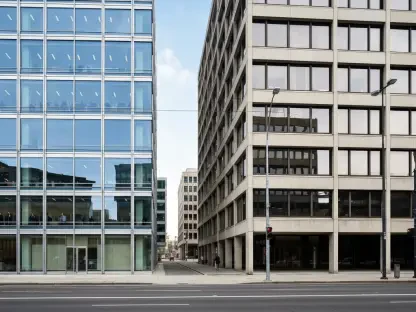In a landscape where property investment has long been dominated by major urban giants like London, Birmingham, and Manchester, a seismic shift is quietly reshaping the UK’s real estate market, drawing attention to emerging cities that were once overlooked. These so-called “new second cities” are capturing the attention of savvy investors who recognize the potential for substantial returns in less saturated markets with remarkable growth in rental yields and more accessible entry costs. Driven by rising rents, moderate property prices, and ongoing urban regeneration, these locations are redefining where capital flows in the property sector. This evolving trend prompts a closer examination of why these areas are gaining traction and how they might represent the future of investment opportunities across the nation.
Emerging Markets Reshaping Investment Trends
Uncovering High-Yield Opportunities in Smaller Cities
A recent analysis of rental market data and house prices across 63 of the UK’s largest cities and towns has revealed striking insights into the performance of emerging markets. Cities such as Ipswich, Leicester, and Portsmouth have shown exceptional growth in rental yields over the past two years, outpacing many established hubs. Ipswich, for instance, saw yields climb by 1.1 percentage points to 5.2%, while Leicester recorded a 1.0 percentage point rise to 5.3%, and Portsmouth jumped 0.9 percentage points to an impressive 6.3%. Other notable contenders like Norwich, Exeter, Reading, and Southampton have also posted significant gains, each hovering around a 0.9 percentage point increase. This surge is largely attributed to a combination of escalating rental prices and property costs that remain more affordable compared to larger urban centers, creating a sweet spot for investors seeking both value and growth in their portfolios.
Shifting Focus from Traditional Hubs
The allure of traditional second cities like Birmingham and Manchester has not diminished, but their investment appeal now mirrors that of London, with correspondingly high entry barriers. As a result, attention is increasingly turning toward less crowded markets where initial investments are more manageable, yet yield growth remains robust. This pivot reflects a broader trend of decentralization in property investment, as economic factors such as affordability and strong rental demand drive interest in these emerging locales. Urban regeneration projects further enhance the attractiveness of these cities, transforming them into vibrant centers with modern infrastructure and amenities. For investors, this shift represents an opportunity to tap into markets that offer a compelling balance of risk and reward, particularly as demand for rental properties continues to grow in areas previously considered secondary.
Strategic Tools and Future Potential
Leveraging Specialist Finance for Market Entry
Navigating the fast-evolving landscape of these new investment destinations often requires innovative financial strategies to seize opportunities swiftly. Specialist finance solutions, such as development exit finance and bridging loans, play a critical role in empowering investors to act decisively in high-growth markets. These tools provide the flexibility needed to fund projects in cities undergoing rapid transformation, where timing can be a decisive factor in securing favorable deals. Industry experts highlight that the combination of strong yield growth and accessible financing options creates a unique window for both novice and seasoned investors to capitalize on trends in places like Ipswich and Portsmouth. With tailored financial products, firms are stepping in as key partners, helping to bridge the gap between ambition and execution in these promising areas.
Urban Regeneration as a Growth Catalyst
Beyond financial mechanisms, the physical transformation of these emerging cities through urban regeneration stands as a powerful driver of investment potential. Projects aimed at revitalizing infrastructure, housing, and public spaces are turning once-overlooked areas into desirable destinations for residents and businesses alike. This structural change not only boosts property values but also fuels rental demand, as improved amenities and connectivity attract a growing population. Cities benefiting from such initiatives are seeing a virtuous cycle of development and investment, where each feeds into the other to sustain long-term growth. For those eyeing the property market, these regeneration efforts signal a clear path to future returns, provided strategic planning and funding are aligned to maximize the impact of these evolving urban landscapes.
Reflecting on a Transformative Shift
Looking back, the remarkable ascent of the UK’s new second cities as investment destinations marked a pivotal moment in the property market’s evolution. The surge in rental yields in places like Leicester and Southampton, coupled with their relative affordability, underscored a departure from the dominance of traditional urban centers. Urban regeneration and specialist finance solutions proved instrumental in unlocking the potential of these markets, offering a blueprint for success. Moving forward, investors would be wise to monitor these areas closely, leveraging flexible funding and staying attuned to regeneration trends to secure a foothold in the next wave of high-growth opportunities. As the landscape continues to shift, a proactive approach grounded in data and strategic partnerships will likely define the path to sustained returns in this dynamic sector.









